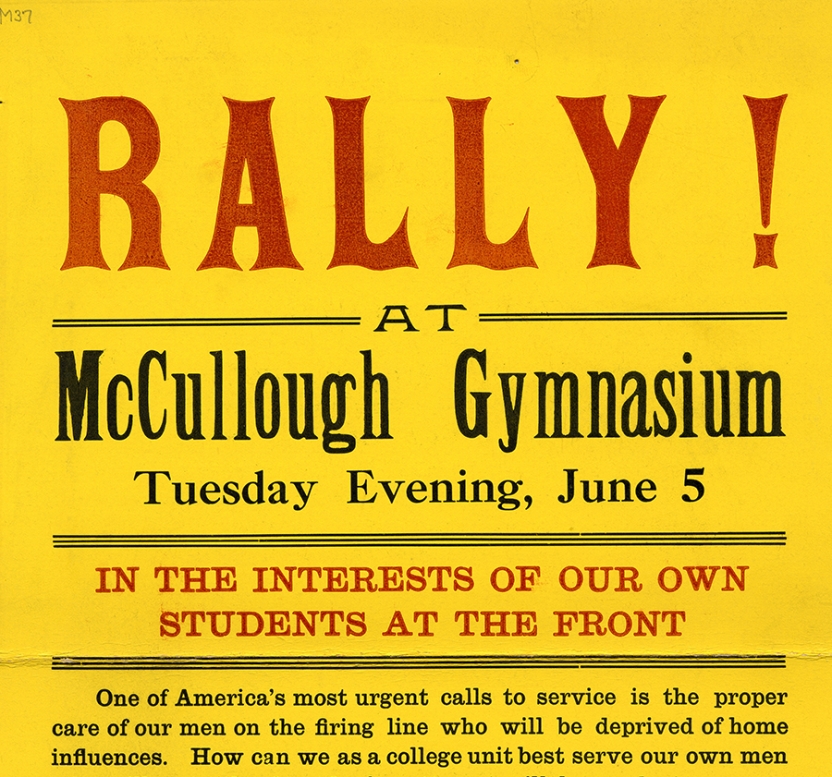Slideshow: Middlebury and the Armistice

MIDDLEBURY, Vt. – One hundred years ago this month, the First World War (1914–1918) came to an end with the signing of the Armistice of Compiègne by Germany and the Allied forces on November 11, 1918.
How was Middlebury College affected by the United States’ 17-month involvement in the war? How many Middlebury students and alumni entered military service? What was taking place on campus? Did the war change life at the College?
Ardent researchers can find the answers to these and many other historical questions through a rich collection of letters, photographs, newspaper articles, scrapbooks, posters, and other materials from 1917 and 1918 held in Special Collections and Archives at the Davis Family Library.
There are photographs of Middlebury’s volunteer militia training in the quad. There is a student’s notice of classification, or “draft card,” after the Selective Service Act of 1917 was enacted. (The undergraduate from Chelsea, Vt., was classified I.A.) And there are booklets like “The Making of a Soldier,” “Why Go to Middlebury in War” and “First the Guns”—all published in reaction to the war in Europe.
| [view:embed_content==601737 width:400] |
The scrapbooks of Helen Stilphen, Class of 1919, Solymn Donald Minor, Class of 1920, and Earle S. Haskins, Class of 1922, provide a wealth of information about campus life, and about the War Service Committee and Women’s Civic Club. Faculty, staff, and student members of both organizations mailed “comfort kits” containing letters, newspapers, snacks, tobacco products, socks, and other items to Middlebury undergraduates and alumni in uniform, and faithfully maintained the correspondence throughout the war years.
A trove of letters, many of which stemmed from these outreach efforts, offers a plentiful source of firsthand reports from servicemen in the field. For instance, there are the letters of Carl W. Perkins, Class of 1916, that he sent back to Vermont from “Somewhere in France.” In a dispatch dated March 28, 1918, he writes:
“I received two [letters] while up in the front-line trenches and read one while on the watch beside our gun while the shrapnel was bursting all around me, so you see your letters have ‘seen action’ even if you can’t.”
Perkins continues: “The censorship on our letters is very rigid. They wouldn’t even let me say that we were in the trenches until we came out. So I cannot tell many of our experiences, but we sure had them aplenty.”
To his point about censorship, the bottom left-hand corner of his letter bears the signature of a first ieutenant and the word “OK,” presumably indicating that his letter passed muster with the censors. Perkins identifies his unit in closing as “Co. C., 102nd M.G.B., Am[erican] Ex[peditionary] Forces.” A copy of the 100-year-old letter can be seen in the slide show that accompanies this story.
– All photographs courtesy of Special Collections

